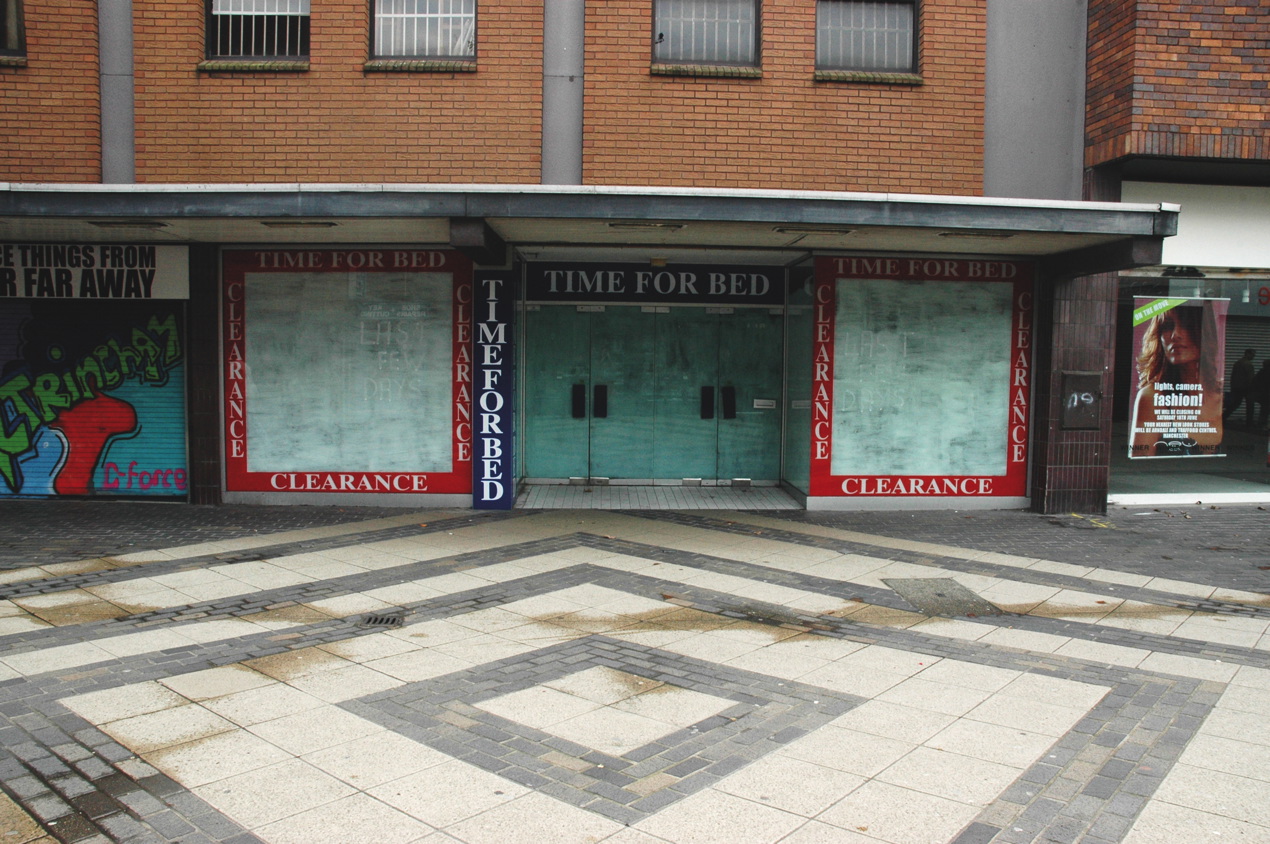Let’s talk shop
With retailers continuing to go under as internet sales rise can the British high street can be saved?
Missed the latest news headline about a retailer in crisis? Don’t worry, there’ll be another along in a minute.
For some time now, the high street has been in decline. As Cathy Parker, professor of marketing and retail enterprise at Manchester Metropolitan University and chair of the Institute of Land Management, has observed, the decline started with the 1990s boom in out-of-town big box retail and leisure. Cheap builds plus cheap land equals an offer that chains couldn’t refuse.
“We’re seeing an emergence of owners with strong market relationships with occupiers.”
Then came the internet. Within a few years, bricks-and-mortar operators were struggling to compete with e-commerce, most retailers establishing an online presence but struggling to compete with “pure play” e-tailers such as Amazon and Asos, with their relative lack of overheads. With less exposure to business rates, no prime location rents and few customer-facing employees, e-commerce has cleaned up.
So to now. Last year saw a string of names disappear or massively cut back, including Toys R Us and Maplin along with a host of restaurant operators – Prezzo, Jamie’s Italian, Cau. Now even the department stores, the bastion of British town centres, have hit the skids. High-end House of Fraser sold out to Sports Direct, while mass-market Debenhams is amid a company voluntary arrangement (CVA), slashing its 170-strong estate.
Government is aware of all this, with high streets minister Jake Berry commissioning the High Street Report in July 2018. Chaired by Sir John Timpson, who built up the retail business that still carries his name, the commission reported on its findings in December, with one of the recommendations, a National High Street Perfect Day, being piloted in Altrincham this May, the Trafford town’s recent revival being seen as an exemplar.
The recommendations set out in the High Street Report covered three areas: the creation of a high streets task force, to be a single voice for town centres; the creation of a Future High Streets fund; and a set of short-term recommendations – that better housekeeping is required by towns, that local authorities should proactively get landlords and tenants to use empty units innovatively, and that action is taken where parking restrictions are helping keep people away.
A former independent retailer, based in Manchester’s Northern Quarter, told Big Issue North that the latter had been her most pressing concern – that rates and rents were expected and budgeted for, but that changes in parking were imposed unilaterally, with no room for negotiation. Austerity-hit councils need to raise money somewhere though, and if not in popular places, where?
It can’t be denied that rents are a huge issue. Front and centre in every effort to rescue a stricken retailer is a proposal to renegotiate increasingly out of touch rental bills. The set of CVAs successfully voted through by Arcadia in June was predicated on huge rent reductions, with landlords such as Trafford Centre owner Intu among those opposed to the deal.
According to the experts, the rental demands of yesterday simply can’t be met tomorrow. Stephen Cowperthwaite, a North West-based director at global property agency Avison Young, says: “It’s clear that current rents on legacy leases are not in line with today’s market. The sector has already seen a huge correction in rental value, with strategic renegotiations of leases being carried out to adjust to market conditions – one notable example being House of Fraser in Manchester.”
Owners of property, whether pension funds, property companies or private owners, have an expectation of what they want. But in businesses with huge estates, margins can be tight, and to suggest they can simply fill spaces with low-paying local start-ups or community things is fanciful. Cowperthwaite says that “a more strategic approach is needed” and ultimately we’ll see a “material shift in the make-up of our city centres and the types of stores and amenities that we find there, which is not necessarily a bad thing”.
The make-up of retail landlords is an issue – pension funds and institutions, combined with single unit owners, local authorities and property companies. Not all landlords are in a position to slash the bills – and while pension funds can “carry” vacancies a bit longer, leaving gaps, the hustle to refill the space by private owners with a mortgage to pay on the building can be problematic too, leading to deals that do nothing to improve the mix – yet more charity shops or bookies, for example.
Cowperthwaite says: “The challenge is that there is simply too much retail space and it needs to be repurposed to bring in alternative occupiers and uses that will benefit not just the town or city centre, but the community as a whole. This may not generate the same level of income, but there is a value generated in terms of social, community and health and wellbeing that is not necessarily captured in monetary terms.”
There may be good news in that we may have bottomed out, with landlords accepting that there’s simply no way of riding this out.

Cowperthwaite says: “Institutions are seeing values erode in the retail sector and so need to react and respond to local needs. This requires a longer-term view as there is not a short-term fix. The question is as much about institutions taking that longer-term view, balanced against their need to deliver returns in the short term. Local and private landlords will not necessarily be able to take on that more strategic view.” So ultimately, a town may be better served if it has a higher proportion of institutional ownership.
One of the issues about rents is that plenty of retailers are stuck in an insidious position of “upward-only rent reviews”, which is as simple as it sounds – your rent will only ever get higher, even as all around you is metaphorically razed to the ground (if things are literally razed to the ground, you do qualify for a rates exemption).
George Lowe of property consultancy Cushman & Wakefield’s retail team, says there is some truth to this, but that retailers aren’t blameless. “Whilst it is true that upward only rent reviews have contributed to escalating rental levels in recent years, this only tells half a story. Many high street brands have failed to adapt their offering to consumers, disregarding the impact internet shopping has had on purchasing habits.
“Some of the most successful brands add value to the consumer by offering an element of experience not easily replicated online. We have seen that retailers with strong brands and clear target markets have been the most resilient, and those with little differentiation to their competitors have often struggled to survive.”
This is true for some sectors – fashion brands like Hollister and techies like Apple have made stores more like showrooms – but is not really an option for less glamorous operators.
Are landlords in general prepared to be more realistic now? Lowe says: “The market is in a period of adjustment, with some landlords deciding to weather the storm before agreeing long leases at lower rents. In the interim many landlords are agreeing short-term leases, often on a rates-only basis to cover their holding costs. Many landlords are also more open-minded about applying for a change of use, with uses such as medical and gyms becoming more prominent on the high street.”
One factor holding larger landlords back, says Lowe, is the way assets are valued. If they own other properties nearby, any agreement on lower rents can affect values there, as “comparable evidence” is built up by valuers.
But there might be another bright spot – any crisis sees the emergence of people with enterprising solutions. Retail’s crisis may just herald a more in-touch property management, breaking down the barrier between faceless finance and street reality.
Cowperthwaite says: “We’re seeing an emergence of owners and, in particular asset managers, with more experience, strong market relationships with occupiers and the public sector, and innovative property management who will be more resilient in the longer term. It’s these people who will deliver an evolution in the services and experiences we get from our shopping centres.”
Some suggest business rates are as much of an issue as rents. It’s not something that’s going to go away, says Cowperthwaite.
“Business rates are just a small part of the problem. Rebalancing them through a form of online taxation would help, but they are an important source of income for local authorities that are still struggling through a sustained period of austerity.”
Lowe calls for change though. “We would hope for business rates reforms to be implemented by the government in the coming months, which in our view should significantly alleviate the pressure on the UK high street. We are aware the Chancellor pledged to reduce business rates by £1.5 billion for UK businesses in his last budget. However we are still waiting for significant changes to be made.”
One issue about rates, says Lowe, is the long gap between revaluations, which means rates don’t reflect property values. Bluntly, the system takes a long time to react, meaning rates can be stupendously high even in struggling areas. There’s also a lack of joined-up government – improvements of property with, say, energy-efficient lighting can lead to a higher business rates bill.
Another source of friction can come in Business Improvement District areas – where shops pay a levy for increased services such as cleaning and security – effectively a service charge. Once a BID is live, a majority vote every few years keeps it ticking along – they invariably pass – and retailers can’t opt out.
That’s not to say BIDs don’t add value – both Manchester and Liverpool’s retail districts have benefited from events programmes that bring in punters – but it’s another cost not all companies enjoy, particularly food and drink operators who lose out to the boom in street food.
